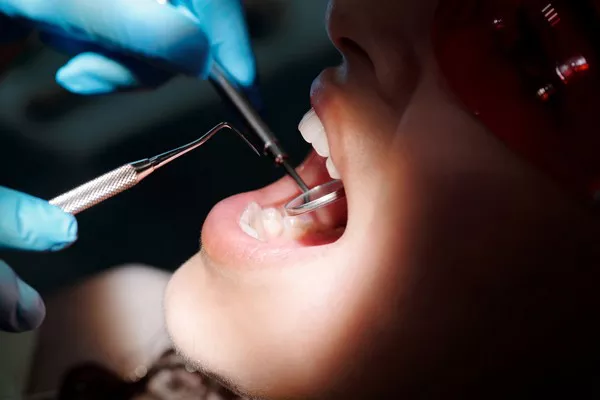A dental implant bridge is a modern, highly effective dental prosthesis designed to replace one or more missing teeth. Unlike traditional bridges, which rely on natural teeth for support, a dental implant bridge is anchored by dental implants. This innovative solution provides a more stable, durable, and long-lasting alternative for tooth replacement.
Definition
A dental implant bridge is a type of dental prosthesis used to replace one or more missing teeth. It is supported by dental implants rather than natural teeth. This structure consists of several components that work together to restore the functionality and aesthetics of the mouth.
Components
The components of a dental implant bridge include:
1. Dental Implants: These are titanium posts surgically inserted into the jawbone, serving as artificial tooth roots. They provide a strong foundation for the bridge.
2. Abutments: These connectors attach to the implants, extending through the gums to support the bridge.
3. Bridge: The bridge itself consists of a framework that holds the artificial teeth (pontics) in place.
4. Pontics: These are the artificial teeth that fill the gap left by missing teeth, providing a natural-looking and functional replacement.
Procedure
The procedure for placing a dental implant bridge involves several steps:
1. Consultation and Planning: Initial consultation with a dentist or oral surgeon includes a comprehensive examination, X-rays, and possibly a CT scan to assess the condition of the jawbone and plan the implant placement.
2. Implant Placement Surgery: During this surgical procedure, dental implants are inserted into the jawbone. The procedure can be done under local anesthesia, sedation, or general anesthesia, depending on the case.
3. Osseointegration: After the implants are placed, a healing period of several months (usually 3 to 6 months) is required for osseointegration, where the implants fuse with the jawbone, creating a stable foundation.
4. Abutment Placement: Once the implants have integrated with the bone, abutments are attached. These serve as the connectors between the implants and the bridge.
5. Impression Taking: Impressions of the mouth are taken to create a custom-fit bridge. These impressions are sent to a dental laboratory where the bridge is fabricated.
6. Bridge Placement: Finally, the custom-made bridge is fitted and secured to the abutments. Adjustments are made to ensure a proper fit and comfortable bite.
Advantages
A dental implant bridge offers several advantages over traditional bridges:
1. Improved Oral Health: Unlike traditional bridges, which require the alteration of adjacent healthy teeth, dental implant bridges preserve the natural tooth structure.
2. Preservation of Jawbone: Dental implants stimulate the jawbone, preventing bone loss that typically occurs with missing teeth. This helps maintain facial structure and appearance.
3. Longevity: Dental implant bridges are highly durable and can last many years, often a lifetime, with proper care.
4. Stability and Comfort: Because they are securely anchored in the jawbone, implant bridges do not shift or move, providing a more comfortable and stable solution compared to traditional dentures.
5. Aesthetic Benefits: Implant bridges provide a natural look and feel, enhancing the patient’s smile and confidence.
Care and Maintenance
Proper care and maintenance are crucial for the longevity and success of a dental implant bridge:
1. Daily Cleaning: Brush and floss daily to keep the bridge and surrounding gums healthy. Special floss or interdental brushes can be used to clean around the implants and bridge.
2. Regular Dental Visits: Schedule regular check-ups and professional cleanings with your dentist to monitor the condition of the implants and bridge, and to detect any potential issues early.
3. Avoid Hard Foods: While dental implants are strong, avoiding excessively hard foods can help prevent damage to the bridge.
4. Quit Smoking: Smoking can impair healing and increase the risk of implant failure. Quitting smoking can improve overall oral health.
5. Use Mouthguards: If you grind your teeth at night, using a mouthguard can protect the bridge and implants from excessive wear.
Costs
The cost of a dental implant bridge can vary widely based on several factors:
1. Number of Implants: The more implants needed to support the bridge, the higher the cost.
2. Materials Used: High-quality materials, such as zirconia or porcelain, tend to be more expensive but offer superior aesthetics and durability.
Geographic Location: Costs can vary by region and the specific dental practice.
3. Complexity of the Case: More complex cases requiring additional procedures like bone grafting or sinus lifts can increase the overall cost.
On average, the cost of a dental implant bridge can range from $3,000 to $25,000 or more, depending on the aforementioned factors.
Insurance Coverage
Dental insurance coverage for implant bridges varies significantly between providers. Many insurance plans do not fully cover implants, considering them a cosmetic procedure. However, some plans may cover a portion of the cost, especially if the implants are necessary for health reasons. It is essential to check with your insurance provider to understand the specifics of your coverage. Additionally, some dental offices offer financing options to help manage the cost.
Comparison with Other Options
When considering tooth replacement options, it’s important to compare dental implant bridges with traditional bridges and dentures:
1. Traditional Bridges: These rely on adjacent teeth for support and require those teeth to be filed down, which can compromise their health. They do not prevent jawbone loss and generally have a shorter lifespan compared to implant bridges.
2. Dentures: While less expensive initially, dentures can be uncomfortable, may slip during eating or speaking, and do not prevent bone loss. They also require more maintenance and adjustments over time.
3. Dental Implant Bridges: Offer superior stability, prevent bone loss, and preserve the integrity of adjacent teeth. They provide a more natural look and feel, and although the initial cost is higher, their longevity often makes them a more cost-effective solution in the long run.
Success Rate
Dental implant bridges have a high success rate, typically between 95% and 98%, making them a reliable option for tooth replacement. Patient satisfaction is also high due to the stability, comfort, and aesthetic benefits they offer. The success of the procedure largely depends on proper planning, the skill of the dental professional, and the patient’s commitment to maintaining oral hygiene.
Choosing a Provider
Selecting a qualified dentist or oral surgeon is crucial for the success of a dental implant bridge:
1. Experience and Expertise: Look for a provider with extensive experience in dental implant procedures. Check their credentials and ask about their success rates.
2. Reputation: Read reviews and ask for patient testimonials to gauge the provider’s reputation.
3. Technology and Techniques: Ensure the provider uses the latest technology and techniques, which can improve the accuracy and success of the implant placement.
4. Consultation: During the initial consultation, ask questions about the procedure, recovery time, and what to expect. A good provider will take the time to address all your concerns and create a tailored treatment plan.
5. Comfort and Communication: Choose a provider you feel comfortable with and who communicates clearly. A positive rapport can make the entire process more pleasant and less stressful.
Conclusion
A dental implant bridge is an advanced solution for replacing missing teeth, offering numerous benefits over traditional methods. Understanding the components, procedure, and advantages can help patients make an informed decision. Proper care and choosing the right provider are key to achieving the best possible outcome and enjoying a beautiful, functional smile for years to come.
FAQs about Dental Implant Bridges
1. What are the problems with dental implant bridges?
While dental implant bridges offer numerous benefits, there are some potential issues to consider. One common problem is peri-implantitis, which is inflammation and infection of the tissues surrounding the dental implants. This condition can occur due to poor oral hygiene, smoking, or certain medical conditions, and if left untreated, it can lead to implant failure. Additionally, implant bridges may require more extensive surgical procedures and have a longer recovery time compared to traditional bridges. In rare cases, complications such as implant malpositioning or nerve damage may occur.
2. What is better, a bridge or an implant?
The choice between a dental bridge and an implant depends on various factors, including the patient’s oral health, preferences, and treatment goals. Dental implants offer several advantages, such as preserving bone health, providing long-term stability, and mimicking the look and feel of natural teeth. However, implants require a surgical procedure and may not be suitable for patients with inadequate bone density or certain medical conditions. Dental bridges, on the other hand, are a non-surgical option that can effectively replace missing teeth, but they may not provide the same level of longevity or stability as implants.
3. How long does an implant-supported bridge last?
The lifespan of an implant-supported bridge can vary depending on factors such as oral hygiene, overall health, and the quality of the dental implants and prosthetic materials used. On average, an implant-supported bridge can last upwards of 15 to 20 years or even longer with proper care and maintenance. Regular dental check-ups and routine oral hygiene practices are essential for maximizing the longevity of the implant-supported bridge.
4. What is the downside of a dental bridge?
While dental bridges offer a relatively simple and cost-effective solution for replacing missing teeth, they have some downsides compared to dental implants. One significant downside is that dental bridges rely on adjacent teeth for support, which may require the alteration or removal of healthy tooth structure. This can weaken the supporting teeth and increase the risk of decay or other dental problems in the future. Additionally, traditional bridges do not address bone loss in the jaw, which can occur following tooth loss and may affect facial aesthetics and oral function over time.
You Might Be Interested In
































